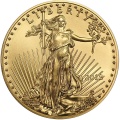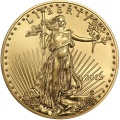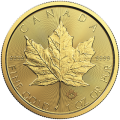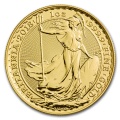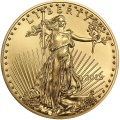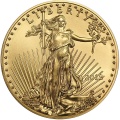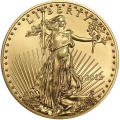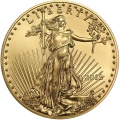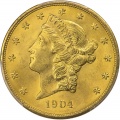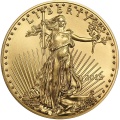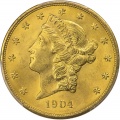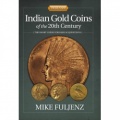March 2018 - Week 4
Q&A with Dr. Mike Fuljenz on Gold Recovered from the SS Central America
These coins were first recovered in 1988, so why has it taken so long for them to come to market?
Over 7,000 gold coins were recovered from the SS Central America during the ship’s original discovery phase in 1988. The exploration crew used an undersea robot they called Nemo, a 12,000-pound remotely operated exploration vehicle with the capacity of recovering something as big as a 1,000-pound anchor or as small as a dime-sized coin without damaging its surface. The bulk of the first wave of coins were brought up during the following summer of 1989. That first batch of gold coins that was recovered and conserved was graded by PCGS in the late 1990s and consisted mostly of 1856-S and 1857-S Liberties.
Why wait so long to recover the second wave of gold coins?
There were legal challenges along the way, but those impediments were finally resolved. The second batch recovered in 2014 consists of far fewer gold coins – only about 3,100 gold coins – including some additional 1856-S and 1857-S $20 Liberties as well as a wide variety of other gold coins, such as $10 Eagles, $5 Half Eagles, $2.50 Quarter Eagles, $3 and $1 Gold pieces as well as some territorial gold coins, gold bars and gold dust. Due to all the demand and inquiries prior to the coins being available, I believe the market will absorb most of these coins quickly.
How can we be sure these coins came from the SS Central America?
The Chief Scientist for the SS Central America expedition since its inception in 1983, Bob Evans, has been the exclusive agent for restoring and authenticating these pieces of numismatic history, which are remarkably well preserved, as they have essentially been untouched by human hands since their minting in the 1850s. His signature is on the authentication certificate inside the innovative PCGS holder that includes a pinch of gold with every coin.
What are the special challenges of restoring a coin that has been so long in salt water and sediment?
Chief scientist of the expedition Bob Evans took particular care with each coin to remove deposits on the surfaces of the coins in order to reveal the coin’s original luster. In many cases, the ocean and the sediment covering the coins protected the surface of the coin. His approach was never to harm the surface of the coin but to reveal the coin’s true surface. His proprietary soaking solution to remove the grime was neither acidic nor base, so it did not affect the flow lines of the original strike, so the flow lines and luster remained undisturbed.
As you surveyed many of the 3,000+ gold coins and gold dust, what impressed you the most?
There were some sub-standard coins which I rejected, being a former grading service grader, but I was amazed at how many of these 160-year-old coins had such strong original luster and original mint bloom. Anybody who acquires such a coin will be immediately struck with its brilliant luster. This is also true of the gold dust, although it is, of course, much smaller. Bob Evans applied a proprietary saline solution to the gold dust to reveal the luster.
Speaking of gold dust, how was that preserved and why is it so important?
Gold dust was a major medium of exchange during the California Gold Rush. A “pinch” of gold was a unit of exchange in commerce. When properly measured, a gold pinch equaled the gold value of a privately minted 50-cent California fractional gold coin. In California in 1857, two pinches of gold could buy a bag of flour, but most miners went to a saloon before they went to the general store. In a saloon, one pinch would buy a shot of whiskey, so the saloon owners would hire bartenders with large thumbs to hold a bigger “pinch” of gold dust. That may sound like cheating, but the cheating went both ways. Some of the miners might mix a little yellow dust with their gold to make their initial drinking spree last longer!
Genuine California Gold Rush gold dust is rare, as it was typically melted into an ingot or used for coin production. Much of the gold dust on sale now was not lying free on the floor of the ocean. It was discovered in hand-sewn sacks, known as “pokes,” much of it locked away in a safe aboard the SS Central America.
Gold is Up 3.7% While the Dow is Down 3.5%
Last week, Gold rose $37 to $1,347 while the Dow Jones Industrials fell by over 1,000 points. On Monday morning, stocks recovered some of their losses, but the Dow took another nosedive on Tuesday. On Monday, gold approached its highest levels of 2018 ($1358, set on February 16), but gold fell $10 on Tuesday due to a stronger dollar. Last week, gold began to rise after the Federal Reserve raised short-term interest rates 0.25% last Wednesday. That has been the pattern over the past few rate increases – a decline in gold prices before the event, then an increase after rates are raised. But most of the decline in stocks and the biggest rise in gold came on Thursday after the prospects for trade war escalated between China and the United States. With only a few trading days left in the first quarter, gold is up 3.7% vs. -3.5% for the Dow Jones Industrial Average, a 7.2% advantage for gold over Dow Jones stocks in the first quarter.
Selections from “Ship of Gold in the Deep Blue Sea” by Gary Kinder
To help you understand more on the background of the exciting new availability of the gold lost at sea over 160 years ago on the SS Central America, here are selections from the book “Ship of Gold.” I want to relate the first reactions of the recovery team led by Tommy Thompson and Chief Scientist Bob Evans when they first saw the “garden of gold” from the SS Central America 7,000 feet below the surface of the Atlantic Ocean in 1988….
Reactions to the First View of the Gold on the Floor of the Ocean
(from Pages 450-455 of “The Ship of Gold”)
“It was just … it was just … covered with gold! I couldn’t believe it! I couldn’t believe it! That was the most thrilling…. We had it right on a pile, nice low pictures, nice and clear. I mean everything was perfect, man. It was incredible! But I looked at it, and I looked up, and, Naaah, this can’t be. I thought, That’s gotta be a bunch of brass laying there. So I looked again! Holy! And I just started looking at the other shots, and I … mean … it … was … PILES! I’m not kidding you, it is awesome! It is absolutely awesome! Stacks of coins and bars of gold of every size and shape are just sitting there!”
– John Doering, the first man to see the first photograph of the sunken treasure (page 450)
“The bottom was carpeted with gold. Gold everywhere, like a garden. The more you looked, the more you saw gold growing out of everything, embedded in all the wood and beams. It was amazing – bars stacked on the bottom like brownies, bars stacked like loaves of bread, bars that appear to have slid into the corner of a room. Some of the bars formed a bridge, all gold bars spanning one area of treasure over here and another area over here, water underneath, and the decks collapsed through on both sides. Then there was a beam with coins stacked on it, just covering it. You couldn’t see the top of the beam, it had so many coins on it.”
– Tommy Thompson’s reaction to the first view of the SS Central America gold (page 452)
“There’s the lure,” said Bob [Evans]. “That’s what brought us here” … “the crew could see the precise grooves etched around the edges of the coins, which now appeared huge on the monitors. One had its back turned, and when Moore adjusted the camera across the top they could read, ‘United States of America.’ At the center was an eagle shield and the rays of the sun, and they could count thirteen stars in a tight oval above the eagle. Curving upward like a smile along the bottom appeared ‘Twenty D.,’ and right above the ‘n’ in ‘Twenty’ was a tiny ‘s,’ the mark of the San Francisco Mint. ‘Look at that eagle shield on the back,’ said Bob, ‘the luster on it.’…. There stood a coin upright, face front, just as pure and lustrous as the day it left the San Francisco Mint. It was emblazoned with the bust of Lady Liberty, lovely in profile, her hair crossed with a tiara and cascading in ringlets down her neck, thirteen stars surrounding her, and her ringlets stopping just short of the date ‘1857.’ In a pocket thirty feet across, the ocean floor lay covered with these coins. Doering figures he had now seen more gold in one place at one time than any other treasure hunter in history, and that included Cortes and Pizzaro.” (pages 454-455)
Important Disclosure Notification: All statements, opinions, pricing, and ideas herein are believed to be reliable, truthful and accurate to the best of the Publisher's knowledge at this time. They are not guaranteed in any way by anybody and are subject to change over time. The Publisher disclaims and is not liable for any claims or losses which may be incurred by third parties while relying on information published herein. Individuals should not look at this publication as giving finance or investment advice or information for their individual suitability. All readers are advised to independently verify all representations made herein or by its representatives for your individual suitability before making your investment or collecting decisions. Arbitration: This company strives to handle customer complaint issues directly with customer in an expeditious manner. In the event an amicable resolution cannot be reached, you agree to accept binding arbitration. Any dispute, controversy, claim or disagreement arising out of or relating to transactions between you and this company shall be resolved by binding arbitration pursuant to the Federal Arbitration Act and conducted in Beaumont, Jefferson County, Texas. It is understood that the parties waive any right to a jury trial. Judgment upon the award rendered by the Arbitrator may be entered in any court having jurisdiction thereof. Reproduction or quotation of this newsletter is prohibited without written permission of the Publisher.

